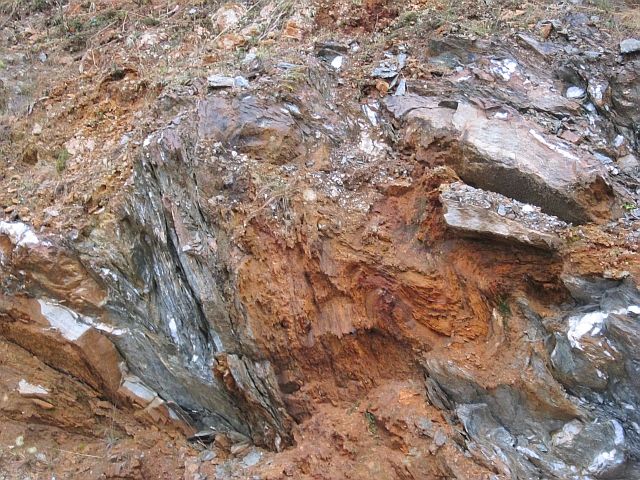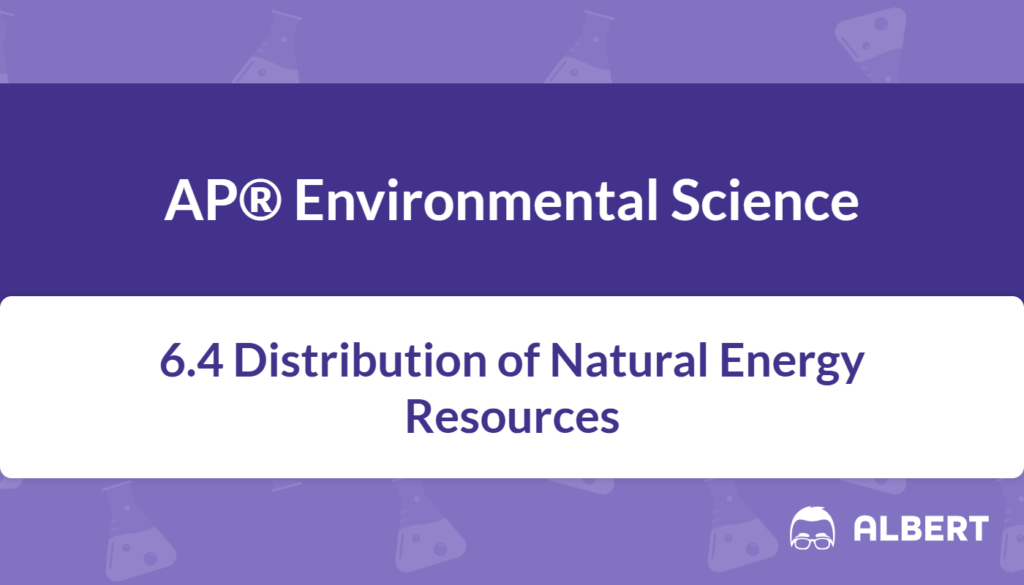What We Review
Introduction
Natural energy resources power everything from household appliances to entire cities. They include materials such as coal, ores, crude oil, and natural gas, each with distinct properties and uses. However, these resources are distributed unevenly around the world, and this uneven distribution can have significant economic, political, and environmental consequences. Understanding why some regions have plentiful fossil fuels while others have few is a key topic in AP® Environmental Science. Moreover, as population growth models project rising energy demands, the global community must consider both where these resources are located and how to use them sustainably.
What Are Natural Resources?
Natural resources are substances or materials that occur in the environment without direct human intervention. They typically include items such as water, timber, and minerals. In the context of energy production, some of the most critical natural resources are:
- Ores (e.g., iron ore)
- Coal
- Crude oil (sometimes simply called petroleum)
- Natural gas
Each of these resources took millions of years to form under specific geological conditions. Therefore, any discussion about their formation must involve geology and climate considerations. Although focusing on fossil fuels remains important, renewable energy sources like solar or wind power are also on the rise and alter the overall global energy landscape. Nevertheless, for this lesson, the emphasis stays on how and why some regions end up with substantial deposits of conventional natural energy resources while others do not.
Global Distribution of Natural Energy Resources
The global distribution of natural energy resources follows specific geological rules. Certain regions are known for abundant coal fields, while others are famous for oil or gas reserves. These distinctions arise primarily because:
- Geologic History: Over millions of years, processes like sedimentation, volcanic activity, and pressure under the Earth’s crust helped shape where fossil fuels would accumulate.
- Geography: Continents have drifted and shifted, leading to variations in rock types and underground formations. Consequently, areas once covered by oceans might now host petroleum deposits.
- Climate (Past and Present): Ancient swamps, for example, produced the plant material that transformed into coal over geological time. In other places, marine microorganisms led to the formation of crude oil and gas in organic-rich sediments.
Because of these factors, natural energy resources appear in pockets rather than blending uniformly across the globe. One region might possess coal but lack significant oil fields, while another might hold vast oil reserves but limited deposits of iron ore.
Case Studies of Natural Energy Resources
1. Ores
Ores are naturally occurring rocks or minerals from which metals and valuable substances can be extracted. Common examples include iron ore, bauxite (aluminum ore), and copper ore.
Definition and Types of Ores
- Iron ore forms the basis for steel production and is found in large deposits on multiple continents.
- Bauxite provides aluminum, which is crucial for lightweight metal applications.
- Copper ore is in high demand for electrical wiring and electronics.

Step-by-Step Example: A Country’s Ore Distribution
- First, geologists map the region’s bedrock and soil layers.
- Next, samples are collected and analyzed to see whether the concentration of valuable minerals meets the threshold to be called an “ore.”
- Then, if the concentration is high enough, the area is documented and readied for mining.
- Finally, economic and environmental assessments guide how the ore is extracted.
For instance, Australia has significant deposits of iron ore in the Pilbara region. This distribution occurred due to ancient geological formations that favored the buildup of iron-rich minerals. Over time, tectonic activity exposed these deposits close to the surface, making mining feasible.
2. Coal
Coal is a sedimentary rock formed mainly from the remnants of ancient plant life. It remains an essential energy source for electricity generation and industrial processes.
Description and Significance
Coal classifications typically include anthracite, bituminous, sub-bituminous, and lignite, each defined by carbon content. Coal combustion influences the carbon cycle, making environmental considerations crucial.
Step-by-Step Example: Coal Distribution in a Specific Region
- Swampy areas from millions of years ago accumulated dead plant material.
- Layers of water and sediment compressed these plant remains under high pressure.
- Continuous heat and pressure transformed the organic material into coal.
- Common coal-rich destinations include parts of the United States (Appalachian region), China (northern regions), and Australia.
In places like the Appalachian region, the underlying geology consists of ancient sedimentary basins that trapped enormous amounts of organic matter. Moreover, repeated cycles of rising and falling sea levels helped preserve these plant deposits, resulting in significant coal seams that we see today.
3. Crude Oil
Crude oil, also known as petroleum, is a liquid fossil fuel formed from microscopic marine organisms. It provides the raw material for gasoline, plastics, and many chemical products used globally.
What Is Crude Oil and Its Uses
Crude oil is a hydrocarbon mixture extracted from reservoirs typically found several thousand meters below Earth’s surface or even beneath ocean floors. Refined products include gasoline, diesel, and jet fuel. Because of its diverse applications, crude oil significantly impacts international economics and politics.
Step-by-Step Example: Crude Oil Distribution Worldwide
- Millions of years ago, marine plankton settled in sediment on the sea floor.
- These sediments were buried, and high pressure and heat converted the organic matter into petroleum.
- Over time, tectonic movements formed reservoirs where oil could accumulate.
- Today, large reserves exist in the Middle East, Russia, and parts of the Americas.
In places like Saudi Arabia, geologic formations known as anticlines (upward folds in sedimentary rock) trapped petroleum in concentrated pockets. Therefore, oil extraction is relatively efficient. Indeed, historical sea coverage and subsequent geological processes account for the region’s world-famous oil fields.
4. Natural Gas
Natural gas primarily consists of methane. It is often discovered in reservoirs alongside crude oil deposits or in deep shale formations. Natural gas provides a cleaner-burning alternative to coal and oil, although it still releases carbon dioxide when burned.
Overview and Applications
Natural gas is widely used for heating, cooking, and electricity generation. As a result of its relatively low emissions compared to coal, many countries consider it a transition fuel while they develop more renewable energy infrastructure.
Step-by-Step Example: Natural Gas Distribution
- Like oil, natural gas starts with the decomposition of marine organisms.
- A combination of high pressure and elevated temperature converts this organic matter into hydrocarbons.
- Progressively, the gas migrates through permeable rock layers until trapped by non-porous rock.
- Regions like the United States (Marcellus Shale), Russia (Siberian basins), and the Middle East often hold large natural gas fields.
Shale gas extraction has increased in recent years due to improved drilling technologies such as hydraulic fracturing. However, these techniques also spark environmental debates about water contamination and habitat disruption.
The Importance of Resource Management
Sound resource management involves considering both where resources occur and how they can be used sustainably. Indeed, an area rich in coal, oil, or gas faces decisions about whether to prioritize extraction for economic gain or to shift toward renewable energy options to reduce carbon emissions. Proper resource management also entails:
- Monitoring extraction rates to ensure resources are available for future generations.
- Using advanced technology to minimize ecological damage during resource extraction.
- Implementing policies that encourage renewable energy and energy efficiency.
Therefore, countries and companies often invest in new tools to balance economic interests with environmental protection. Understanding the spatial distribution of natural resources is a vital step toward this balance.
Conclusion
The world’s supply of fossil fuels and other natural resources is far from random. Geological history, geographic traits, and climate patterns have guided the formation and location of coal, crude oil, natural gas, and ores. Each resource requires distinct conditions, and each region’s geologic story reflects millions of years of Earth’s dynamic forces. Learning about these distributions provides context for many environmental, social, and economic issues, from energy security to climate change. Studying where resources occur and how they are managed can help you appreciate the extraordinary processes shaping our planet.
Important Vocabulary
- Natural Resources: Materials or substances that occur in nature and can be used for economic gain.
- Ores: Solid materials (rocks or minerals) from which a valuable substance like a metal can be extracted.
- Coal: A combustible sedimentary rock formed from the remains of ancient plant matter; primarily used in electricity generation.
- Crude Oil: A liquid fossil fuel formed from the remains of marine organisms and used to make gasoline, diesel, and other products.
- Natural Gas: A fossil fuel composed mainly of methane, often found alongside crude oil deposits.
Sharpen Your Skills for AP® Environmental Science
Are you preparing for the AP® Environmental Science test? We’ve got you covered! Try our review articles designed to help you confidently tackle real-world AP® Environmental Science problems. You’ll find everything you need to succeed, from quick tips to detailed strategies. Start exploring now!
- AP® Environmental Science: 6.1 Review
- AP® Environmental Science: 6.2 Review
- AP® Environmental Science: 6.3 Review
Need help preparing for your AP® Environmental Science exam?
Albert has hundreds of AP® Environmental Science practice questions, free response, and full-length practice tests to try out.








